Knight, Stanley Melvin (Flight Lieutenant)
unknown 1948-June-08
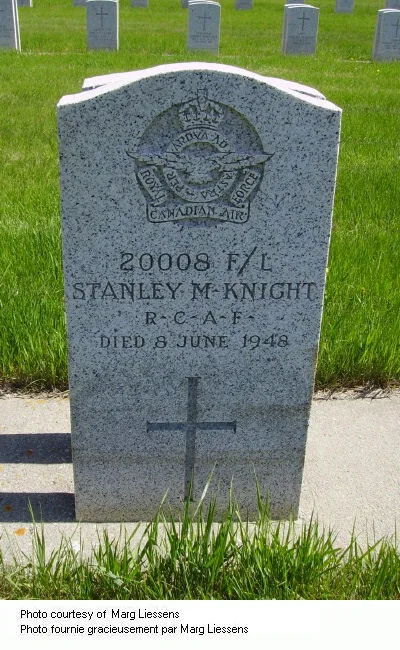

Birth Date: 1921-July-15
Born: Calgary, Alberta
Parents: Son of Charles and Mary Knight of Calgary, Alberta.
Spouse: Husband of Sheila Knight. Father of Ann Knight. Brother of Alfred, Lyman, Charles, Edwin and Mary.
Home: Calgary, Alberta
Enlistment: Calgary, Alberta
Enlistment Date: 1940-August-24
Service
RCAF
Unit
417 Sqn- Squadron
Supporting Liberty and Justice
Base
Rank
Flight Lieutenant
Position
Pilot
Service Numbers
20008
Home
Mustang serial: 9574
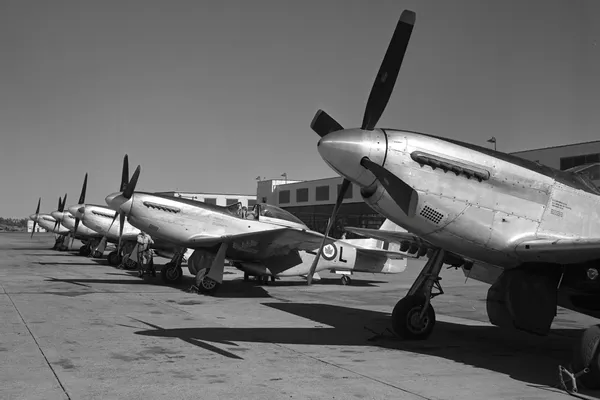
North American Mustang Mk. IV, RCAF (Serial No. 9253), coded BA-S,
No. 424 Squadron, Hamilton, Ontario
Chris Charland noted that the Mustang in the forefront is former USAF P-51D (Serial No. 44-74502A).
The North American Aviation P-51 Mustang is an American long-range, single-seat fighter and fighter-bomber used during World War II and the Korean War, among other conflicts. The Mustang was designed in April 1940 by a team headed by James Kindelberger of North American Aviation (NAA) in response to a requirement of the British Purchasing Commission. The Purchasing Commission approached North American Aviation to build Curtiss P-40 fighters under license for the Royal Air Force (RAF). Rather than build an old design from another company, North American Aviation proposed the design and production of a more modern fighter. The prototype NA-73X airframe was rolled out on 9 September 1940, 102 days after the contract was signed, and first flew on 26 October
The Mustang was designed to use the Allison V-1710 engine, which had limited high-altitude performance in its earlier variants. The aircraft was first flown operationally by the RAF as a tactical-reconnaissance aircraft and fighter-bomber (Mustang Mk I). Replacing the Allison with a Rolls-Royce Merlin resulted in the P-51B/C (Mustang Mk III) model, and transformed the aircraft's performance at altitudes above 15,000 ft (4,600 m) (without sacrificing range), allowing it to compete with the Luftwaffe's fighters. The definitive version, the P-51D, was powered by the Packard V-1650-7, a license-built version of the two-speed, two-stage-supercharged Merlin 66, and was armed with six .50 caliber (12.7 mm) AN/M2 Browning machine guns.
Canada had five squadrons equipped with Mustangs during the Second World War. RCAF Nos. 400, 414 and 430 Squadrons flew Mustang Mk. Is (1942"“1944) and Nos. 441 and 442 Squadrons flew Mustang Mk. IIIs and Mk. IVAs in 1945. Wikipedia and Harold Skaarup web page
Unit Desciption
417 Sqn Supporting Liberty and Justice ("City of Windsor")
History of the Squadron during World War II (Aircraft: Hurricane Mks. IIB, IIC, Spitfire Mks. VB, VC, VIII, IXB)
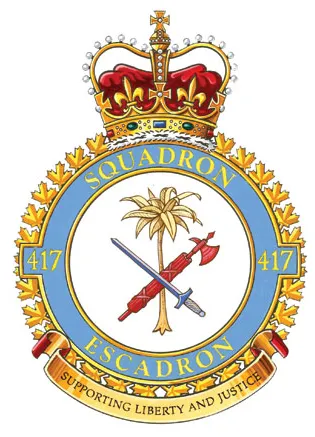
No. 417 Squadron was the 16th RCAF squadron formed overseas in WWII. It was the seventh fighter squadron, and was formed at Charmy Down, Somerset, England ![]() in November 1941. After 4 months in England and Scotland, the squadron sailed to Egypt where it flew Hawker Hurricanes and, later, Supermarine Spitfires in the defence of the Suez Canal and the Nile Delta. It became the only Canadian squadron in the Desert Air Force, and provided air defence and ground support to the British Eighth Army as it advanced from El-Alamein to Tunisia. It was in Malta to support Operation HUSKY, the invasion of Sicily in Jun-Jul 1943, and then provided support for the army in its campaign through Italy. It was disbanded at Treviso, Italy
in November 1941. After 4 months in England and Scotland, the squadron sailed to Egypt where it flew Hawker Hurricanes and, later, Supermarine Spitfires in the defence of the Suez Canal and the Nile Delta. It became the only Canadian squadron in the Desert Air Force, and provided air defence and ground support to the British Eighth Army as it advanced from El-Alamein to Tunisia. It was in Malta to support Operation HUSKY, the invasion of Sicily in Jun-Jul 1943, and then provided support for the army in its campaign through Italy. It was disbanded at Treviso, Italy ![]() on June 30, 1945.
on June 30, 1945.
Overall the squadron flew 12,116 sorties. It claimed 29 enemy aircraft destroyed, 8 probables and 22 damaged, for the loss of 32 aircraft and 28 pilots of whom 7 were killed, 11 presumed dead, 8 were POW and 2 evaded capture. The squadron also accounted for many locomotives, rail cars, tanks and other vehicles. There was one ace among the pilots, Squadron Leader A.U. Houle, DFC & Bar. Squadron personnel were awarded 1 DSO, 1 Bar to DFC, 9 DFCs and 5 MiDs. Battle Honours were: Defence of Britain 1942, Egypt and Libya 1943-43, North Africa 1943, Sicily 1943, Italy 1943-45, Salrno, Anzio and Nettuno, Gustav Line, Gothic Line.Wikipedia, Kostenuk and Griffin
Maps for Movements of 419 Squadron 1942-45
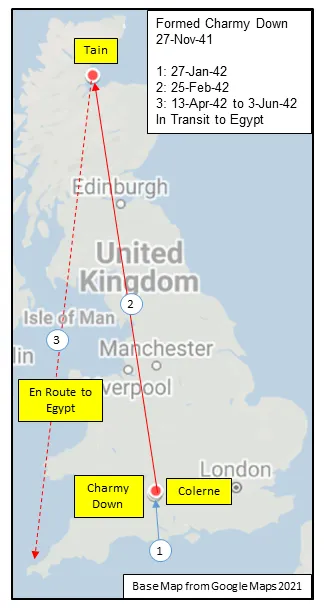
MAP 1: 417 Squadron Movements in Britain 1941-42 (right-click on image to display enlarged in new tab)
|
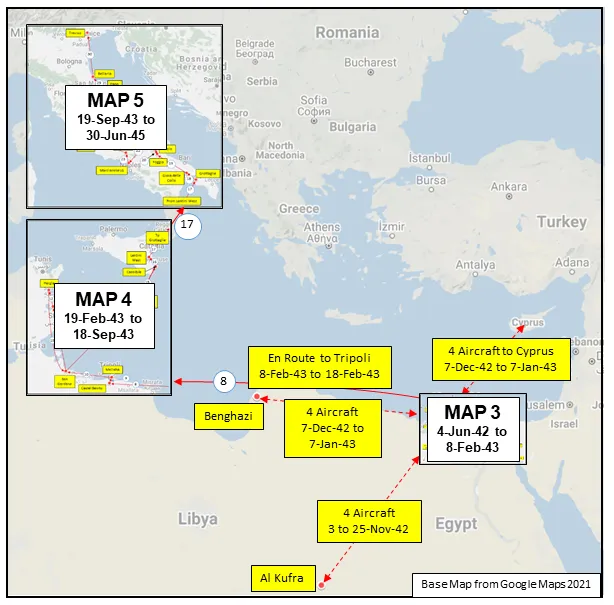
MAP 2: 417 Squadron Movements in North Africa and Mediterranean Theatre
|
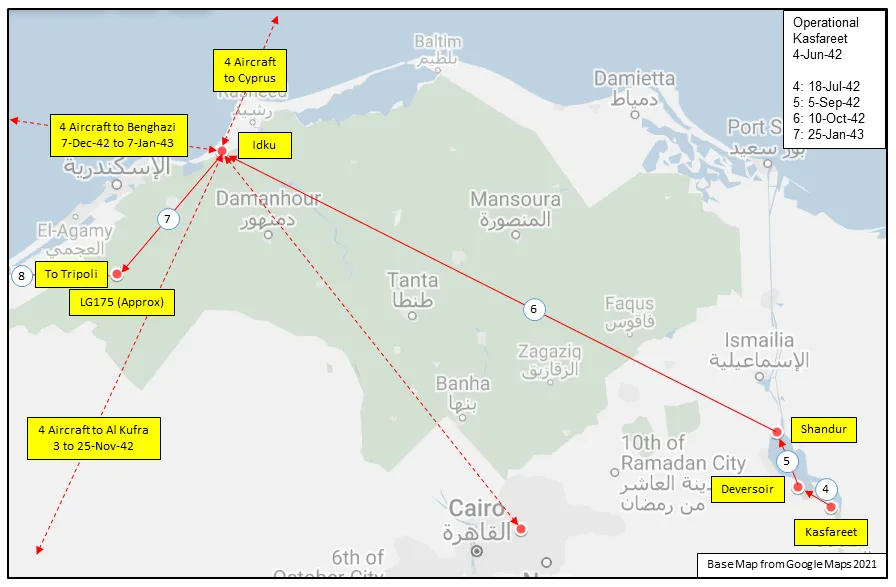
MAP 3: 417 Squadron Movements in Egypt 1942-43 (detail of Map 2)
|
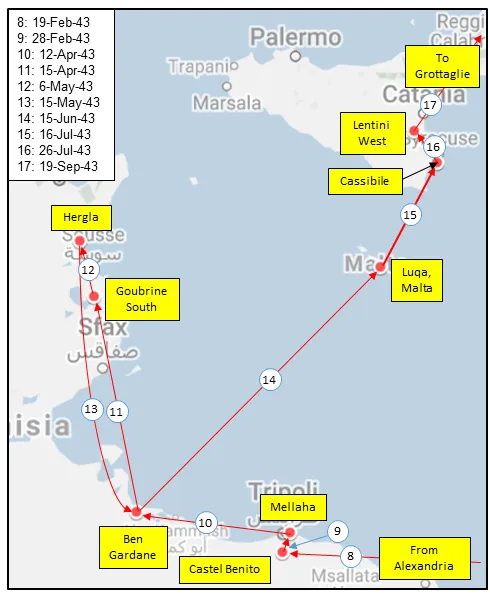
MAP 4: 417 Squadron Movements in Tunisia and Sicily 1943 (detail of Map 2)
|
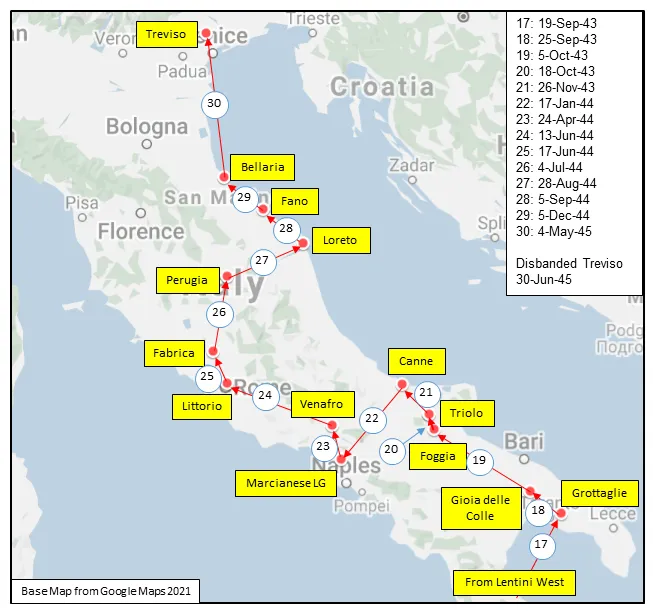
MAP 5: 417 Squadron Movements in Italy 1943-45 (detail of Map 2)
|
417 Squadron History Summary 1941-45
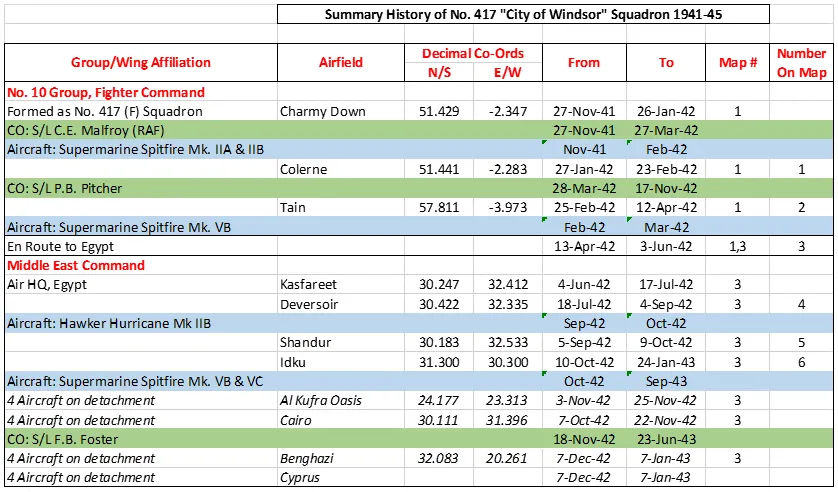
417 Squadron History Summary 1941-45 Page 2
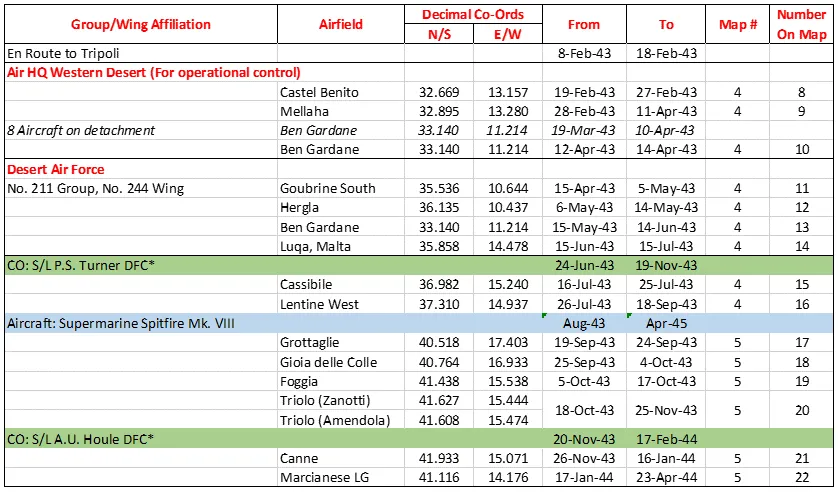
417 Squadron History Summary 1941-45 Page 3
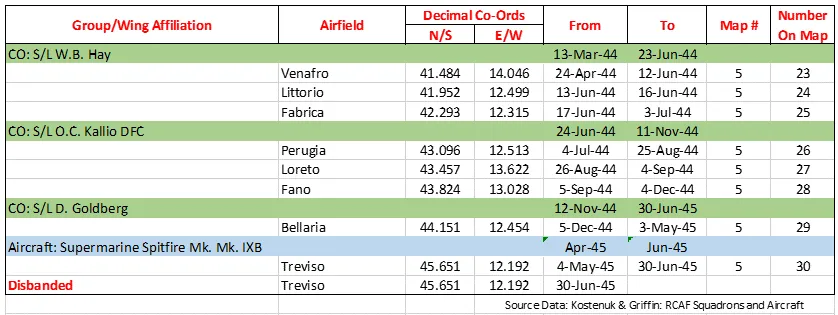
History of the Squadron Post-WWII (Aircraft: Mustang IV, Harvard II, Starfighter, Expeditor, Silver Star, Dragonfly, Huey, Iroquois, Griffon)
417 Squadron was reformed and disbanded twice since its original period of activity. The Squadron was reactivated on June 1, 1947 as a Fighter Reconnaissance Squadron at RCAF Station, Rivers, Manitoba ![]() , where it flew North American Mustangs and Harvards in the close air support role until August 1, 1948, when it was disbanded.
, where it flew North American Mustangs and Harvards in the close air support role until August 1, 1948, when it was disbanded.
Twenty-two years later, in 1970, 417 Squadron was again reformed, but from the No. 6 (Strike and Reconnaissance) Operational Training Unit (OTU) at CFB Cold Lake, Alberta ![]() , which had been training pilots on the CF104 Starfighter since 1961. 417 continued as the CF104 OTU until the Squadron was disbanded in April 1983, as a result of the phasing out of the Starfighter.
, which had been training pilots on the CF104 Starfighter since 1961. 417 continued as the CF104 OTU until the Squadron was disbanded in April 1983, as a result of the phasing out of the Starfighter.
During one of 417 Squadron's periods of inactivity, Base Flight at Cold Lake was formed on 24 August 1954. Its original reason for being was to provide a communications link to Edmonton, then five hours away by road. The Flight performed this with their first Aircraft, a Beechcraft Expeditor. In the process of expanding its role, Base Flight amassed a wide variety and number of aircraft, making it one of the largest and most active flying units in Canada's post-war Air Force. The fleet included H-5 (Dragonfly) and H-34 (Horse) helicopters, de Havilland Otters and the Douglas C-47 Dakotas, three of which were modified with nose cones to efficiently train upcoming CF 104 pilots on air intercept radar systems. Base Flight also employed the T-33 Silver Star as utility transport, airborne target trainer and as an air combat adversary. On the helicopter side, the main roles were, and still are, to rescue downed aircrew and to provide Medical Evacuation services (MEDEVAC) to both military and civilian communities. To fulfil these and other diverse roles, Base Flight added to the two original above-mentioned helicopters by receiving three UH-1 Huey or Iroquois helicopters and later, two CH-135 Twin Huey Aircraft. On April 1, 1993, 417 Squadron was re-formed again, incorporating the Base Flight plus aircraft servicing and maintenance elements of the Wing Maintenance organization.
The mission is now to provide helicopter support to 4 Wing, Cold Lake, by providing a dedicated on base Search and Rescue Unit. The unit’s primary role is to conduct Base rescue for the fighter units on base. Its secondary role is to augment the National Search and Rescue capability.